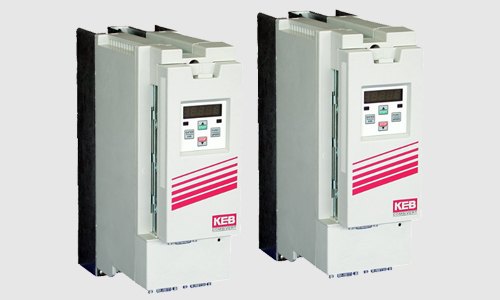Posted on 13th Oct 2023

When using an elevator, many individuals take the smoothness of the ride for granted. According to CM Industry Supply Automation - Servo Drive & Servo Motor Expert, the controller, variable frequency drive, and brakes must all be precisely adjusted for a responsive and comfortable ride.
When used appropriately, the variable frequency drive, also known as the VFD, can be a potent instrument for mechanical adjustment. The software capabilities in an elevator VFD for the two primary elevator adjustments—rollback and higher speed control response—will be the topic of this paper.
When the brake lifts, no speed order has been given, and the VFD has not built up enough holding torque to stop the car from moving in the direction of weighing, rollback might happen briefly at the start of the trip.During takeoff, passengers in the automobile could experience this as a bump. Due to the lower starting friction of gearless machines, rollback is more visible on permanent magnet gearless motors than induction geared motors. If the elevator controller and motor are both placed in the machine room, rollback can be visibly identified.
However, because the motor is hidden, diagnosing rollback may be more challenging in machine room-less (MRL) systems. Software for inverter scoping can help in detecting and compensating for rollback. The four channel scope trace in Figure 1 below illustrates rollback utilizing the colors red (command speed), blue (actual motor speed), green (motor torque), and yellow (motor position).
Before the speed order is provided, the motor position (yellow) begins to diverge from zero, indicating that the brake has been lifted and that there is insufficient holding torque (green) to keep the vehicle at zero speed. There are many torque bumps that can be felt by passengers during takeoff as a result of motor action in response to the brake being raised.
There are various ways to revert adjustments. For instance, the timing of the brake and speed commands may be changed so that the vehicle starts to move as the brake is being lifted. While this might lessen the consequences of rollback, it doesn't deal with the underlying problem and still doesn't give passengers a smooth takeoff. Fortunately, depending on the VFD manufacturer, reversion can be avoided using software.
The majority of elevator drive manufacturers feature a way for delivering a torque command during or right after the brake picks in order to prevent rollback. The various strategies for applying holding torque to stop rollback are discussed in the paragraphs that follow.
Utilizing a feedback control loop is one approach. You can utilize a feedback control loop with a proportional and integral coefficient to provide the motor enough holding torque to keep it from rolling back. When using this technique, the car must move in order for the function to operate as intended. Although the movement appears contradictory at first, it is actually quite slight.
Passengers in the car cannot feel or see this movement, which is caused by the sheave rotating. A scope trace of torque building in response to movement is shown in Figure 2 below.
The drive will swiftly ramp torque (green) to retain the motor at zero speed based on the amount of movement the motor encoder detects. This is accomplished by modifying the feedback control loop's integral coefficient, or "gain."
Over time, the integral response experiences error, in this example, non-zero speed. In order to compensate for the non-zero speed inaccuracy, higher integral gain values will ramp the torque more quickly until a steady-state condition (zero speed) is reached.
In general, the elevator mechanism is more responsive after activating FFTC. Less impact will be felt from the speed increases, and effective speed control can be kept across a larger range of increases. Applications with aggressive speed control profiles and those with high starting friction, like induction geared machines, benefit from the use of FFTC.
Two typical elevator ride quality issues can be resolved by the Keb Drive or Lenze Drive, a potent tool for adjusting elevator ride quality. With the use of a PI control loop in the VFD, rollback can be stopped. Rollback can also be eliminated with additional equipment, such as load weighers. FFTC can offer additional answers for highly dynamic elevator applications to achieve desired ride quality. For the best possible passenger experience, the ride may be fine-tuned with additional changes such low pass filters and gains.